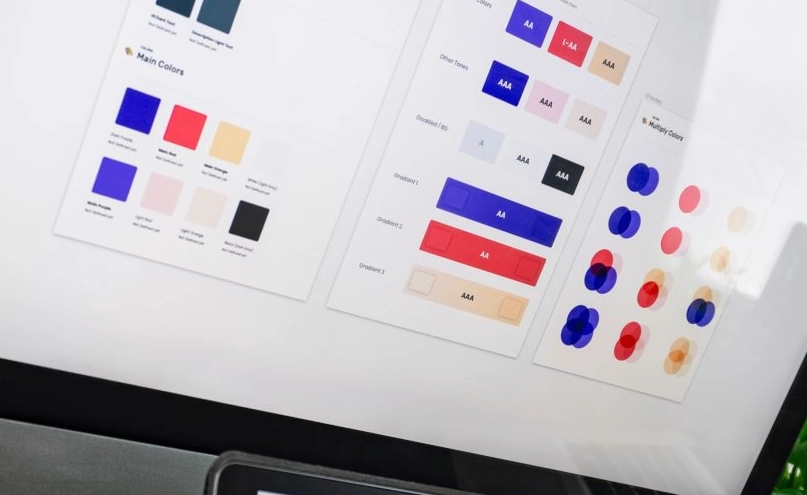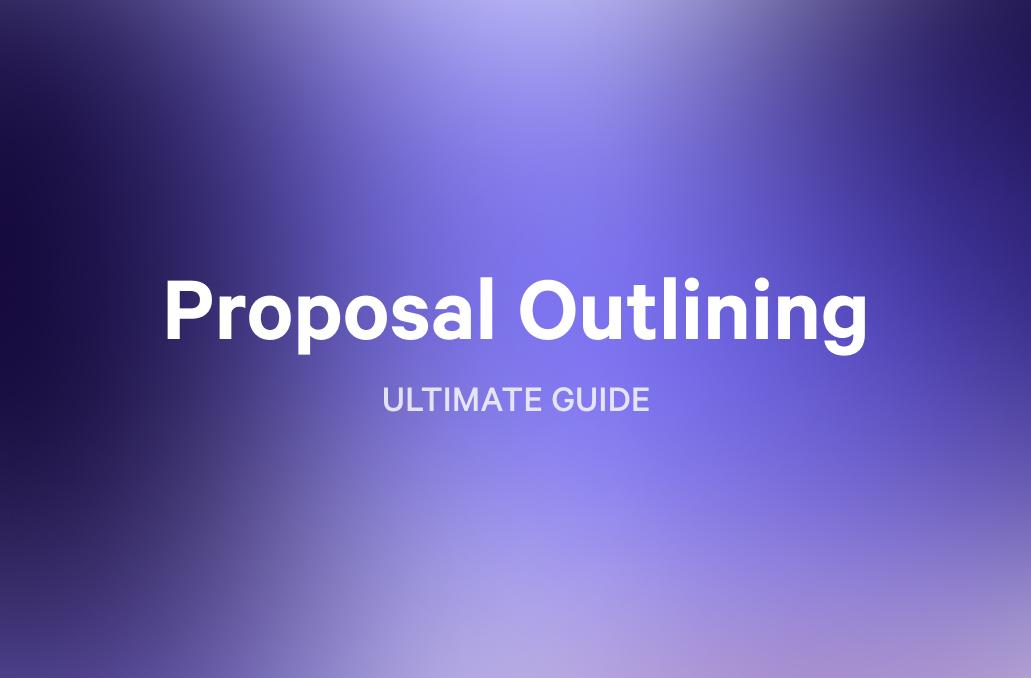Executed correctly, brand collaborations combine astute business strategy with the kind of creative opportunities that marketing teams dream about all year round.
However, preparing a brand collaboration proposal requires the same approach used for any B2B sales proposal. You’ll need a clear persuasive argument, backed with compelling evidence and social proof, presented in a professional and engaging format that makes it easy for the prospective partner to say yes.
In this article, we’ll discuss different approaches to brand collaboration. We'll also give you tips on creating a template that will allow you to channel your innovative ideas in a clear, structured proposal. Our proposal template will demonstrate to your prospective partner why joining forces with you could be the smartest move they’ve ever made.
Key takeaways
- Brand collaborations can expand reach, offset costs, improve brand trust, and boost sales.
- A brand collaboration proposal should be clear, persuasive, and backed with compelling evidence.
- Successful collaborations require thorough research of potential partners and careful planning.
- Proposals should include an introduction, goals and strategy, deliverables, timeline, expected results, and social proof.
- Flexibility and continuous assessment are key to successful brand collaborations.
What is a brand collaboration proposal?
A brand collaboration proposal is a comprehensive outline of a proposed collaboration between two brands (or a brand and an influencer). It’s usually created in response to a stated desire from both brands to work together.
The key word here is collaboration - your proposal isn’t outlining a defined set of services in a traditional vendor/client relationship. It’s more like a set of ideas or strategies representing a starting point. In the spirit of collaboration, it’s important to remain flexible and receptive to the other partner’s ideas.
There are many ways to collaborate with other brands or influencers, ranging from product ‘shout outs’ and social media takeover days to time-honored arrangements such as referrals and their modern digital counterpart, affiliate marketing.
Some collaborations go even deeper, with both brands investing in serious R&D and co-producing a shared product or range of products.
The benefits of brand collaboration
There are many business benefits that can result from a well-executed brand collaboration. These include:
Expanding your reach. Collaboration can be used to open up new locations and demographics, bringing the other brand’s customers to your door. Customers from the other brand's audience can be excited by the idea of an innovative collaboration.
This was the case with the Taco Bell Doritos Locos Taco. One of the most successful fast food products of all time, Taco Bell sold over a billion units in the first 12 months.
Offsetting costs and sharing resources. Collaborations can be used to expand your offer in unexpected ways that would be expensive and time-consuming for you to pursue unaided.
Target achieved this through a series of collaborations with high fashion designers such as Rachel Comey, Victor Glemaud, and Nili Lotan.
By working with these designers to create limited runs of affordable clothes, Target was able to access a level of design skill and prestige far beyond what consumers expect from this high-street giant.
In providing Target with this image makeover, the designers were able to leverage Target's massive customer base to raise awareness of their brands as something for a whole new audience of custom clothes shoppers to aspire to.
Improve brand trust and customer loyalty. One of the most common reasons to collaborate is to improve public perceptions of your brand. Working with a company, influencer, or organization that is clearly a positive societal force can reflect well on your brand.
This was certainly the case when Buzzfeed partnered with Best Friends Animal Society to produce an article featuring Emma Watson, their brand ambassador, playing with kittens (who incidentally all needed adopting).
Best Friends Animal Society got to leverage the massive audiences enjoyed by Buzzfeed, while Buzzfeed made the most of an opportunity to showcase its values and charitable instincts.
Boost sales and revenue. While all these collaborative strategies are intended to ultimately boost sales and revenue, some collaborations are the result of both brands identifying a lucrative gap in the market.
Apple needed a credit card company to partner with for Apple Pay. Mastercard was only too happy to oblige by becoming the first major company to allow consumers to store their credit and debit cards in Apple Pay.
As well as the obvious benefits to their revenue and market share, the association allowed Mastercard to align itself with perceptions of Apple as a pioneer of reliable technological innovations.
how to write a collaboration proposal: Key elements to include
Preparation
The best collaborations are often the result of a sustained effort and a lot of hard work. That work starts long before you send any proposals.
You’ll need to research potential collaborators thoroughly and curate targeted branding opportunities to improve your chances of a successful partnership proposal.
You’ll need to explore their:
- Core beliefs and values
- Target audience - does it align with yours? Would it provide a new audience?
- Marketing strategies and goals
- Products, services, and offerings
- Team members, governance, revenue models, and company culture
These factors can help you effectively qualify potential brand partners. Be aware that any partner will scrutinize you similarly - is your brand appealing enough for them? Do you have sufficient audience or market share to make a collaboration worth their while?
Once you’ve narrowed down to solid prospects, begin to establish contact through the appropriate social media platforms (whether that's LinkedIn or Instagram). Once you've familiarized yourself, you can test the waters with an exploratory email (or, even better, an introduction from a third party).
When mutual interest is established, it’s time to create a brand collab proposal built around the following key sections.
Introduction
It can be useful to introduce your brand and your work in this section but keep it brief and succinct. It’s better to use this section to focus on the other brand and help them understand what benefits they’ll get from partnering with you.
If their brand’s values and audience align with your own, it shouldn’t be too hard to find positives about their brand you can highlight in this section. Talk about why you’re keen to work with them, and your complimentary intro should get your proposal off to a good start.
Goals and strategy
This section allows you to provide a high-level overview of your vision for collaboration. Discuss the scope of the project, along with a few options to extend and progress the partnership should it prove successful. If applicable, outline which products will be promoted, any fees or services that may change hands as compensation, and the general timeline or timeframe.
Deliverables
Break down your deliverables, explaining exactly what your partner can expect from you. If you’re offering to promote their brand, define how this will be done (providing examples or mock-ups if necessary), how often it will be done, and the cadence of your promotional efforts.
Timeline
Provide your prospective partner with a clear timeline that lets them visualize how the collaboration will play out. This will help them think strategically about managing the workload involved and hopefully start working towards the suggested start date.
Expected results
It’s important to keep this section realistic and don’t offer unprovable results. ‘Underpromise and overdeliver’ is a fair summary of how you should approach any forecast of expected results.
You can offer a solid set of success assessment criteria, though. Use the following principles to set out how you’ll measure the success of your partnership.
Use the right KPIs. Is your partner hoping to increase their reach? Measure audience share. Are they looking to offset marketing costs? Use financial data from their previous marketing campaigns to establish a ‘counterfactual’ measure of how much they would expect to pay without your assistance. Make sure your metrics match the stated goals of the collaboration.
Align your tracking data. Make sure that any KPIs you’re tracking are being measured the same way by your partner - that way, you’ll avoid confusion when comparing data six months down the line.
Plan for continuous assessment. Hold your collaboration accountable with targets and progress reviews to ensure the venture stays profitable and on track.
Social proof
In this section, you’ll prove why your brand is exactly the right fit for your prospective partner with a range of social proof.
This might require you to demonstrate the size, strength, and loyalty of your audience or customer base. Alternatively, you might want to show off the product's virtues and highlight its relevance to your partner’s offer.
Any previous experience of successful brand collaborations you can draw on will be useful here. You can use the quantitative data from your previous collaborations to add credibility to the forecasted expected results you provided in the previous section.
Conclusion
Your conclusion needs to emphasize your flexibility. Frame your proposal as a starting position, and encourage your prospective partner to engage further by providing contact details across various communication channels.
If you’re confident your partner is ready to engage with the collaboration as you’ve described it, you can provide T &Cs and e-sign functionality embedded in the proposal document to streamline the process and let them close the deal.
Read next: Our guide to the top sales presentation software
Example of a brand collaboration proposal template
Qwilr’s brand collaboration proposal template provides everything you need to create a solid framework for repeatable brand collaboration proposals that are easy to customize to each unique opportunity that comes your way.
Using our template, you can immediately create your proposal following the professional format outlined here.
- Introduction
- Goals and strategy
- Deliverables
- Timeline
- Expected results
- Social proof
- Conclusion
Qwilr proposals are professionally designed and mobile-friendly. They’re instantly adaptable and customizable with any content you want to introduce. You can import your branding elements and seamlessly incorporate interactive elements such as embedded videos, image galleries, and interactive pricing tables for added impact.
Join forces - and crush your business goals
Brand collaborations can often appear frivolous, but there’s usually a strong business case to justify the relationship.
If you’re hoping to engage another brand to work alongside yours, then it’s up to you to make a case for it as professionally and convincingly as possible.
You’re much more likely to be taken seriously if your proposal is clear, well-structured, and beautifully designed. Qwilr’s customizable brand collaboration proposal provides everything you need to kickstart your collaboration with mobile-friendly design, interactive content, and e-sign functionality. Test it out for yourself with a 14-day free trial.
About the author

Dan Lever|Brand Consultant and Copywriter
Dan Lever is an experienced brand consultant and copywriter. He brings over 7 years experience in marketing and sales development, across a range of industries including B2B SaaS, third sector and higher education.
Frequently asked questions
An effective business partnership proposal should open with an introduction, where you briefly explain the motivation and scope of the collaboration, before setting out goals, deliverables, timeline and expected results.
Research your potential collaborators thoroughly to make sure their values and goals are aligned with your own (and that you have something useful to offer). Interact with them in a low-key way on social media, to get a sense of their communication style and responsiveness, before approaching them with a brand outreach e-mail or DM to suggest a collaboration.
If they’re open to the idea, you’ll need to create a comprehensive proposal.
Your brand collaboration email needs to be snappy, with a strong subject line and a list of several compelling reasons why the collaboration would be in their best interests. Using a customized business e-mail, summarize what form the collaboration could take. You’ll need to prepare a full collaboration proposal if the brand agrees.


